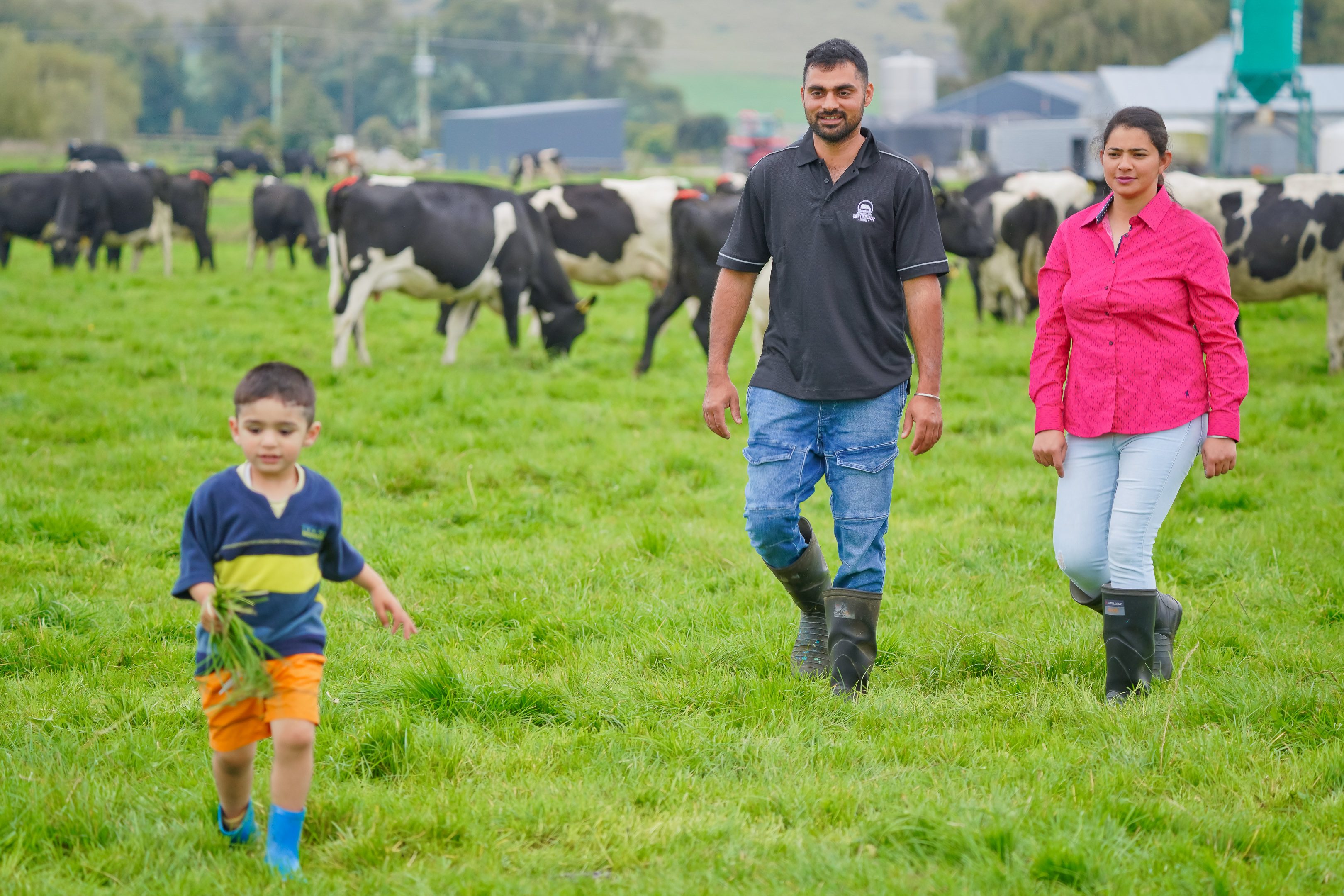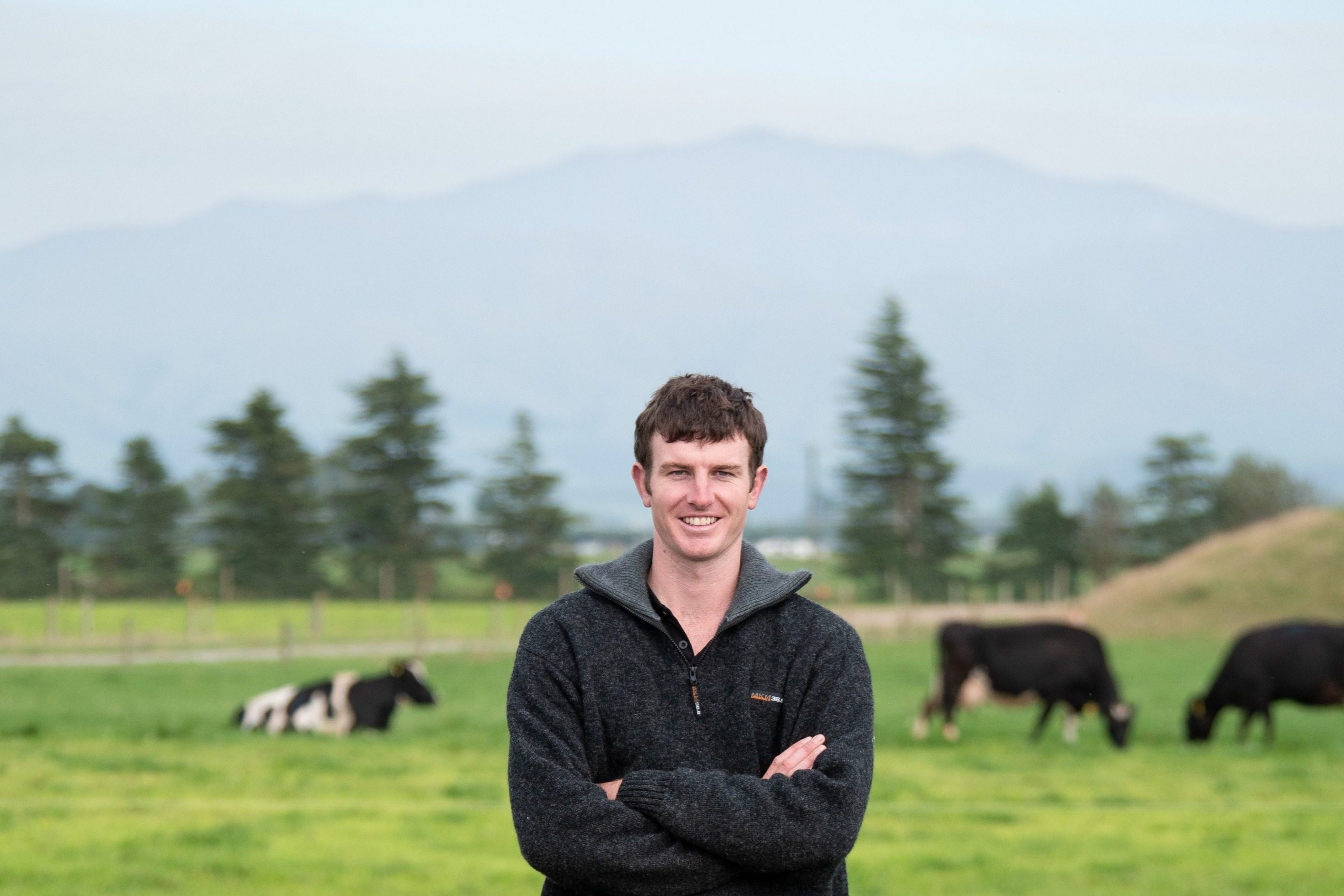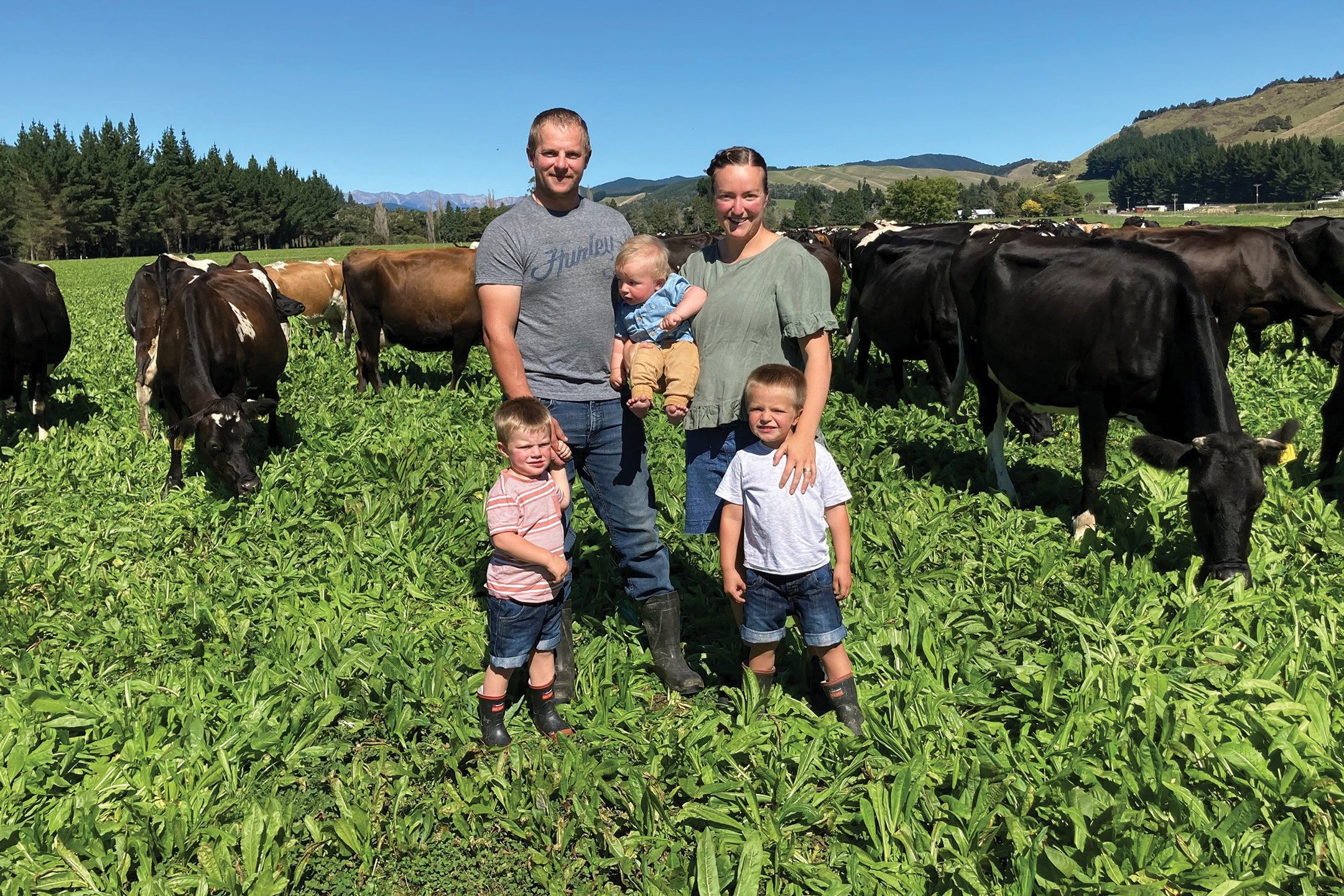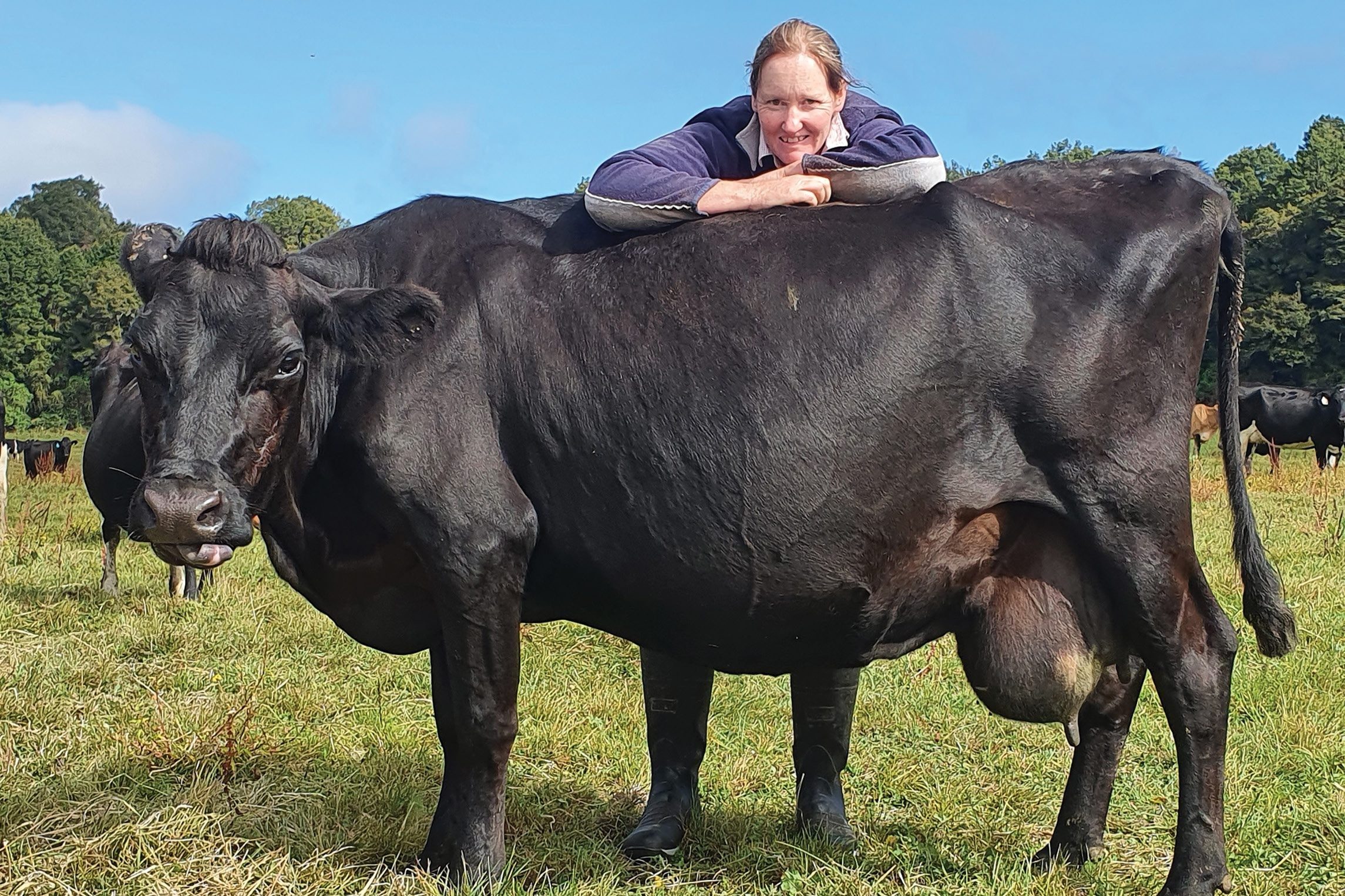Farmers are used to high rainfall at the top of the South Island, but the
Haldanes copped more than their regular quota. By Anne Hardie.
The Haldane family farm at Bainham near the South Island’s northern tip usually enjoys a 4.5-metre annual rainfall, but relentless rain through winter and spring saw all their best-laid plans go out the window.
Robert and Debbie Haldane milk 800 cows on a 276-hectare milking platform close to the start of the Heaphy Track, which puts them geographically close to the West Coast and hence the rainfall that goes with it. They are used to getting 25mm of rain an hour for a six-hour stretch, but this season has taken it to another level.
“It’s been a weird season.” Robert says. A season that has prompted them to buy in an extra 58 tonnes of palm kernel, 58t of barley and 25t of molasses on top of their usual inputs to feed the cows when they couldn’t grow enough grass in the wet conditions.
“We’ve basically been haemorrhaging money to feed the cows.”
But it was necessary to fill the gap and a good payout made it possible.
A key decision in spring to managing their pasture through the rain was religiously sticking to a 30-day round, even when pasture was tight. It helped them come out the other side in a relatively good position despite the season and by the end of December they were ahead in total production.
“Through spring we keep to a 30-day round and won’t speed up the round unless we are reaching our targets in front of us,” Robert says. “We’re really pedantic on it.”
Their son Ollie has been contract milking for them for the past two seasons with his partner Briar Hayton-Seelye and it hasn’t been plain sailing.
Halfway through last season they were struggling to find guaranteed winter grazing so the 12ha of kale they had in the ground to feed the milking herd through autumn was held over for winter feed. That meant they were short for autumn which led to the cows being in poorer condition and so they dried them off 14 days early. They ended up with an unplanned 200 cows on the milking platform through winter. Between poor grass growth, wetter weather last winter and decreased utilisation, the cows never achieved their target condition score for calving.
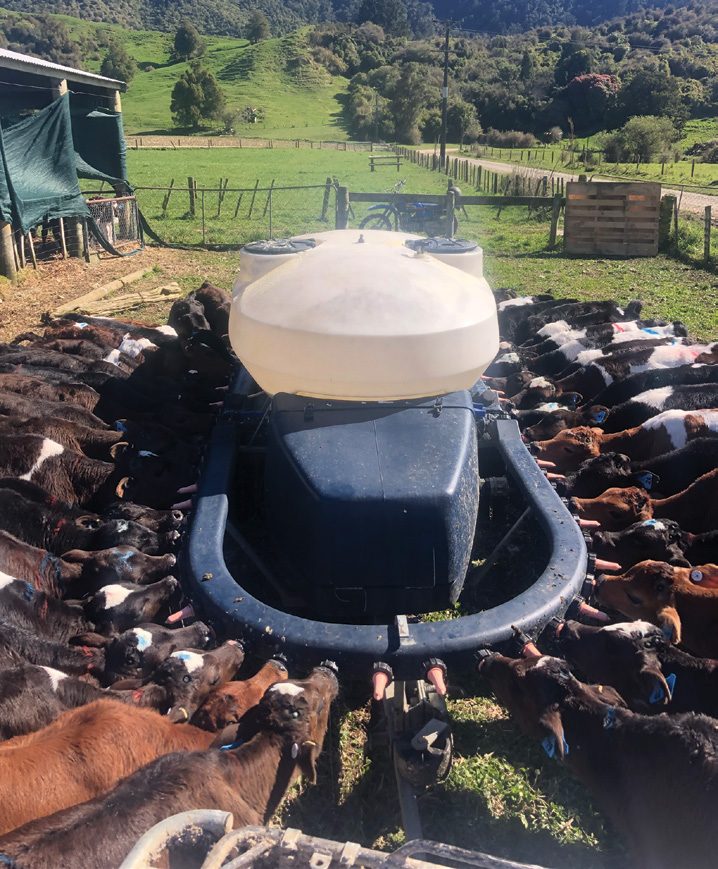
Then the rain hammered the farm and they had a tight calving in the midst of it. Synchronised mating of non-cyclers and the top two-thirds of the heifers, plus short-gestation bulls at the tail of their nine-week mating results in a busy calving and demand on feed early on. Half the herd had calved within the first 17 days of calving and there was a dearth of potential workers to help out.
Ollie and Briar employ two full-time senior staff and three casual juniors and the farm fortunately has homes for staff, including one they use as shared accommodation for casual staff. Their nearest township is tiny Collingwood and further afield Takaka isn’t much bigger, so finding staff is challenging at the best of times, let alone when travellers are taken out of the equation. They had one overseas couple who would have stayed for calving this year, but their visas expired and they were gone by the time the Government loosened the rules on visas.
“We normally have foreigners through summer,” Ollie says, “and this year we hung on to everyone we had. The shared accommodation suits travellers and they stay three to four months and are on their way.”
Ollie’s brother, Billy, works for them through the initial busy time of spring and can jump into most roles, but for 10 months of the year he is full-time on the 170ha support area. This season, Briar and Debbie raised the calves, working around Briar and Ollie’s three young children who were home from school through lockdown and often unavailable for online classes because they were helping with calves. Briar says parents felt a lot of pressure to have their kids attend online classes, but many like themselves just couldn’t make the time for them every day. She says the kids gained a lot on the farm through that period that was simply a different learning experience to school.
From calving they managed the cows on a feed budget of 14 to 15kg drymatter (DM)/cow, using barley and palm kernel to top up the grass shortage. Restricting the cows enabled the grass to lift in increments so they were able to get enough grass ahead of the cows. They reached peak production about November 1 of 1.84kg MS/cow which was only down by about 5% on other years.
The farm had no surplus though and the Haldanes couldn’t put in their usual 19ha summer crop of chicory because they couldn’t afford to take paddocks out of the round when the grass wasn’t growing enough for the cows, despite sticking to a 30-day round through spring.
“You have to have your grass at the two to three-leaf stage,” Robert says. “If you go too fast, it won’t grow back.”
Even through the rest of the season, they never dropped the round below 21 days and only got to a 21-day round for a short period before lengthening it out again because the growth wasn’t there.
“If we shift the round length it is only because we can see it in front of us,” he says. “There should be a rising plane to balance date and I think we’re more conservative because we are on a more unforgiving farm.”
The team use the spring rotation planner and if the season puts them under pressure – like this one – they discuss it two to three times a week. Plans for grazing can quickly change due to the weather and this season showed just how flexible they needed to be to react to conditions.
“This year has not been about planning but reacting,” he says. “We’re monitoring our covers all the time and react quite quickly.”
Robert says changes to their nitrogen application regime definitely had an impact this season, as did reducing palm kernel. Nitrogen was reduced from 210kg/ha to the 190kg/ha cap, while palm kernel in line with Fonterra’s drive to reduce its use as per Fonterra’s Fat Evaluation Index (FEI) in milk sampling.
“If it’s cold and wet the clover won’t grow. It was a bad year to be really short of nitrogen. We would traditionally follow the cows with 1kg/ha nitrogen and we’ve reduced it overall and changed to sulphate of ammonia instead of urea. Palm kernel has been such a good tool and we’ve been cutting back hard on that.”
In a typical season, they contract palm kernel on a monthly basis so they have some sitting there when needed but not buying in excess. This year they had 336t bought on contract with another 92t bought on spot market at $75/t plus freight to cover the spring deficits. To that they added an extra 25t of barley and 25t of molasses which went above their budgeted feeding plan, but Robert says it was key to holding the rotation length.
The barley is good to settle the cows in the wet, but usually it is just a minute trickle in the shed, whereas this year they were being fed up to 4kg/cow/day for the main herd on twice-a-day (TAD) milking when the weather dictated and 2kg/cow/day for the heifers on once-a-day (OAD) milking.
“It’s not sustainable doing that every year and if it wasn’t a high payout we would have just dried cows off or put more cows on once a day.”
To add injury to insult, the endless rain of winter and spring was then followed by a dry January and the pasture disappeared. After such a long, wet period, the root zone for pasture was very shallow and copped it as soon as the season went dry.
As soon as it began to dry out, they decided to begin culling cows and sent 30 away. Robert says they intend to stagger further culling until the end of the season so they are not caught out by potential lack of space at freezing works again.
“If the meat works have to shut down because of Covid it is a real concern. It blows the feed budget out of the water if you have 40 cows you don’t want.”
Toward the end of February the drought had knocked production and it was just under 3% down on their initial budgeted production of 325,000kg MS. The rain that hammered Westport delivered 150mm in 24 hours on the farm – just a typical rainfall – and prompted good grass growth that has set them up well for autumn.
Though they haven’t had chicory this year, they did get 12ha of maize planted on the milking platform and another 6.5ha on the support area. The maize was aimed at feeding the cows through April and May to set them up for winter and calving. But the drought forced them to feed the cows standing maize for 10 straight days until the rain got the grass growing ahead of them.
In the past they have planted 12ha of fodder beet on the milking platform to transition the cows at 5kg/cow/day with grass before wintering them on fodder beet at the leased block.
Fodder beet delivered “fantastic” crops up to 35t/ha when they first planted it seven years ago, but the rhizoctonia or root rot which is caused by air-borne fungi has followed the crop around the block and they have run out of paddocks to grow it well. Instead, they plant maize which Robert says is not as good as fodder beet but is “pretty bullet proof” and produces 20 to 22t/ha. When they put it into the system in autumn, they can usually have the cows at their calving condition score by May 31.
Plus, Ollie says the cows’ health is better in spring in the absence of fodder beet, with less milk fever and fewer retained foetal membranes.
In a typical year, chicory has provided good summer feed as long as they can get it into the ground on time. Ollie says chicory is far more flexible to graze compared to turnips with a fixed date to graze 70 to 100 days after planting. They also use chicory to slow the round up and can graze it by Christmas which is earlier than maize. It usually plays a big part in keeping the main herd on twice-a-day milking through to May. This season, without chicory and less grass, they put the herd on to 10 in seven milkings at Christmas on the advice of their FarmWise consultant, Brent Boyce, and didn’t lose much production.
They are now targeting 316,000kg MS for the season, which is down on their budgeted 325,000kg MS. Robert says they have incurred far higher costs to keep production up which could not have been done without the high payout. When they initially began buying more feed to put into the system, they thought it would only be needed for a short period and the alternative was underfeeding the cows.
“If we knew in advance of the payout and how long we would be short of feed, we would’ve fed more! It’s a balancing act of fully feeding stock and not over-spending.”
Changes are now afoot for the Haldanes’ farming operation as they have sold the support block to buy an 87ha neighbouring dairy farm. It was not a planned expansion, but the chance to buy neighbouring land was too good to miss. It will suit their goal of becoming a self-contained dairy operation, especially with winter grazing becoming harder to source and freight costs to cart cows elsewhere escalating. This winter they will have standing grass on the new dairy farm, plus grazing on the sold runoff still, so are feeling a lot better about setting the herd up for next season.
Bringing the new farm into the operation will also give them scale for options. The plan is to add 60ha of the farm to their milking platform and lift cow numbers to 950 which will be divided into a 650-cow herd milking TAD and a 300-cow herd on OAD.
It will give them more cropping and regrassing options. Plus, they will be able to retire the steeper land at the back of their farm from the milk platform and use it solely for dairy replacements. Some will go into pine trees to harvest and provide carbon credits which will be useful going forward.
By adding scale and options, Robert hopes they will be able to lift per cow production higher than the 400kg MS/cow they are producing now. In the medium term, their goal is to make a good profit and reduce debt.


